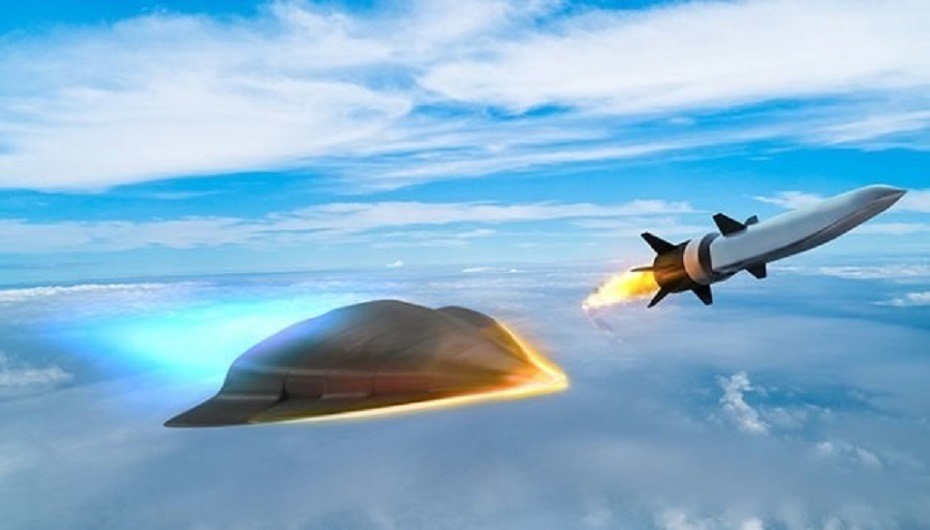
Thanks to a rapidly growing arms race to develop hypersonic vehicles, a four hour flight from Sydney to San Francisco is fast becoming a reality. But so too is the capability of delivering conventional or nuclear payloads at ultra-high velocities over long ranges. Hypersonic missiles, known for their high speeds and unpredictable trajectories, render most of the current generation of air defence systems useless against them.
To learn more about hypersonic vehicles and the implications this technology will have on both the military and commercial sectors, I chatted with Professor Andrew Neely, Associate Dean for Research Engagement, Associate Professor Sean O’Byrne, and Senior Lecturer in Aerospace Engineering Dr Bianca Capra from UNSW Canberra.
Uniquely clever
As usual you won’t see much media hype or grandstanding, but Australian scientists are right amongst the best in the world leading the development of this transformative technology.
“We are a leading voice in the international community in fluid thermal structural interaction for high speed flight,” Prof Neely pointed out. “And that’s because we have come up with some uniquely clever ways to design and test appropriate fundamental experimental cases to learn more about the complex, coupled physics, in order to test and develop the simulation tools.”
Hypersonic flight is generally defined as flight at speeds beyond Mach 5 – that is above about 6,150 km/hour. These speeds bring many difficulties, not least incredible heat from both air friction and from the shock waves generated by moving faster than the speed of sound. The temperatures a hypersonic vehicle encounters are so high that conventional materials can’t withstand them and maintain their strength.
No longer flying in air
In fact, at hypersonic speeds you are no longer flying in air. A/Prof O’Byrne explained that’s why materials science is critical to the success of hypersonic flight, as we’ve seen with re-entry of the Space Shuttle into the earth’s atmosphere, because “at very high speeds it actually changes the chemistry of the gas that flows around the vehicle, so you’re no longer flying in air, you’re flying in a real gas, maybe a mixture of dissociated oxygen and nitrogen or even ionised for very high energy re-entries.”
“At hypersonic speeds you are no longer flying in air”
With these incredible speeds, all the decisions for the vehicle and its operations have to occur much faster than conventional flight systems have been designed to deal with, because “the processes that go on when you’re trying to fly at 5-10 times the speed of sound occur on much shorter timescales, and so everything that you do to control an aircraft, everything that you do to make an aircraft behave the way you want, has to be done really, really quickly,” A/Prof O’Byrne said.
Laser spark plug
To solve some of these problems, UNSW have developed a number of novel technologies including the world’s fastest laser-based temperature measurement (two nanosecond time resolution), as well as a laser spark plug for hypersonic vehicles to ensure the chemical reactions process fast enough so that they can occur inside the vehicle.
A/Prof O’Byrne also talks about their work developing laser-based sensors that “augment things like pitot tubes to measure 10,000 times a second or faster, what’s happening to the air speed surrounding a vehicle; enabling technologies that will allow the next generation of hypersonic vehicles to actually be flyable.” This led to a hypersonic laser air speed sensor that was tested in flight, and resulted in a patent for a laser-based air speed sensor for commercial aircraft.
Hypersonic headache
The reason why nations including China and Russia are investing so heavily in developing hypersonic weapons is because their tremendous speed and unpredictable trajectories will force the defender to make rapid decisions based on insufficient information, thereby increasing the likelihood of error. For instance, a hypersonic missile launched towards the east coast of Australia would be skimming in and out of the stratosphere making it very difficult to know whether it will hit Sydney, Canberra or Melbourne.
“It’s very fast, it’s very hard to hit, it’s very unpredictable and it has tremendous potential destructive capability. All of those things make it a very potent potential weapon,” Prof Neely said.
China is leading the charge, with Chinese scientists presenting more than 250 papers – more than 10 times the number presented by US researchers – at a 2017 hypersonics conference in Xiamen, China. More recently, China’s Zingkong-2 “waverider” hypersonic cruise missile was tested to Mach 6. The Communist Party’s Global Times claimed the new weapon’s speed and manoeuvrability will “break through any current generation anti-missile defence system.”
In reaction to these threats the US Department of Defense is investing over $1 billion annually into hypersonic research. Australian researchers, including the team at UNSW Canberra, work alongside many of them and will make significant contributions to this important capability in years to come.
On a more positive note, Prof Neely explains that “if we look forward 50 or 60 years, you can imagine what capability we could unlock beyond defence – for high speed transport, and for planetary exploration. The fundamentals can feed all sorts of applications and that’s what universities are particularly interested in.”
Note: This article was published by Australian Defence Magazine online. Lincoln Parker works for the NSW Defence Innovation Network (an initiative of the NSW Government, Defence Science & Technology Group and seven NSW universities). The author’s views are his own.









